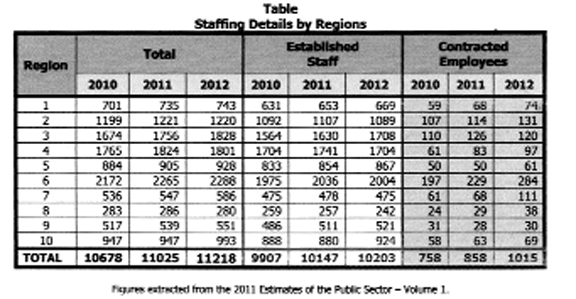Dear Editor,
One is grateful to Mr Anand Goolsarran for highlighting what at a minimum is a double standard in one of many other areas of non-transparency in the Public Service (‘Retirees in the public service…‘ SN August 11).
The highly personalised employment relationships, which he has observed, substantively contrast with Public Service Ministry’s practice, if not rules, of rehiring retirees at one level below that of the job last occupied. It is uncertain, however, to what extent these personnel enjoy similar contract benefits as described in the letter referred to.
The truth is that over the past several years the concept of public service has increasingly become a myth. For example, the last Chairman of the Public Service Commission was virtually transferred from the position of Permanent Secretary, in contravention of Clause 7 of the constitution which denies such eligibility, until three years after demittal from the service and in any case whose appointment requires prior meaningful consultation with the service and in any case whose appointment requires prior meaningful consultation with the Leader of the Opposition.
The office of the Chairman has been vacated for months now and the politicians do not appear to have noticed who the new Chairman is reported to be – very possibly because the Public Service Commission is no longer required to fulfil its constitutional mandate. It is simply bypassed by the prevalent contract employment process. There is simply no provision for the PSC’s engagement in the various and variable procedures of recruitment by contract.
It is therefore totally uninformed of the staff complements of the respective public service agencies; and therefore cannot compile a relevant database of posts, the incumbents and their remuneration.
But neither the contesting politicians nor representative unions, who insist that ‘public servants’ be paid increased remuneration, are able to identify these ‘deserving’ recipients’, as distinct from ‘contracted’ employees.
Nor do these spokespersons seem to pause to reflect on the reality that in the different ‘contract’ supermarkets the same job can have a wide range of values, and how possible is it to predict the cost of salaries and wages for the public service for the next year, as portrayed in the National ‘Estimates,’ which incidentally have lost their original inference and are now structured in cement.
As they speak, the politicians seem reconciled to the inclusion in the very ‘Estimates’ of only ‘contracted’ employees who encumber ‘pensionable posts,’ while simultaneously accepting that holders of positions which function in another version of ‘public service,’ are paid from funds not identifiable until after ‘budget cuts’ are effected.
All this means that the ‘public service’ of the future will be ‘run’ (down) rather than managed and operated, by increasingly non-permanent staff, outside of a regulatory framework which provides for consistently objective vetting of relevant credentials and further, close monitoring of performance.
The prospects for a sustainable level of high productivity would appear therefore to be uncomfortably slim for the employers themselves, not to mention the ‘public’ who must be ‘served.’
There is much more that the politicians do not know; certainly no better than the cleaners and office assistants and those in their grades, who do not realise that they too are non-permanent employees, since the Public Service Ministry has edicted that they should be employed on contracts renewable annually. Little do these personnel realise that the only pensionable benefits for which they can hope will be from the NIS; that is, of course, if their contracts keep being renewed – until eligibility time.
What ultimately we are being faced with is the effective disaggregation of the public service as a statutory institution, into a series of convenient ‘personalised arrangements’ – presumably a form of privatisation?
As a matter of interest, with the wide range of powers and authority of Regional Executive Officers in the Ministry of Local Government and Regional Development due to come under parliamentary scrutiny, the following table which includes ‘contracted employees’ may be of interest.
 Figures extracted from the 2011 Estimates of the Public Sector – Volume 1.
Figures extracted from the 2011 Estimates of the Public Sector – Volume 1.
Yours faithfully,
E B John






